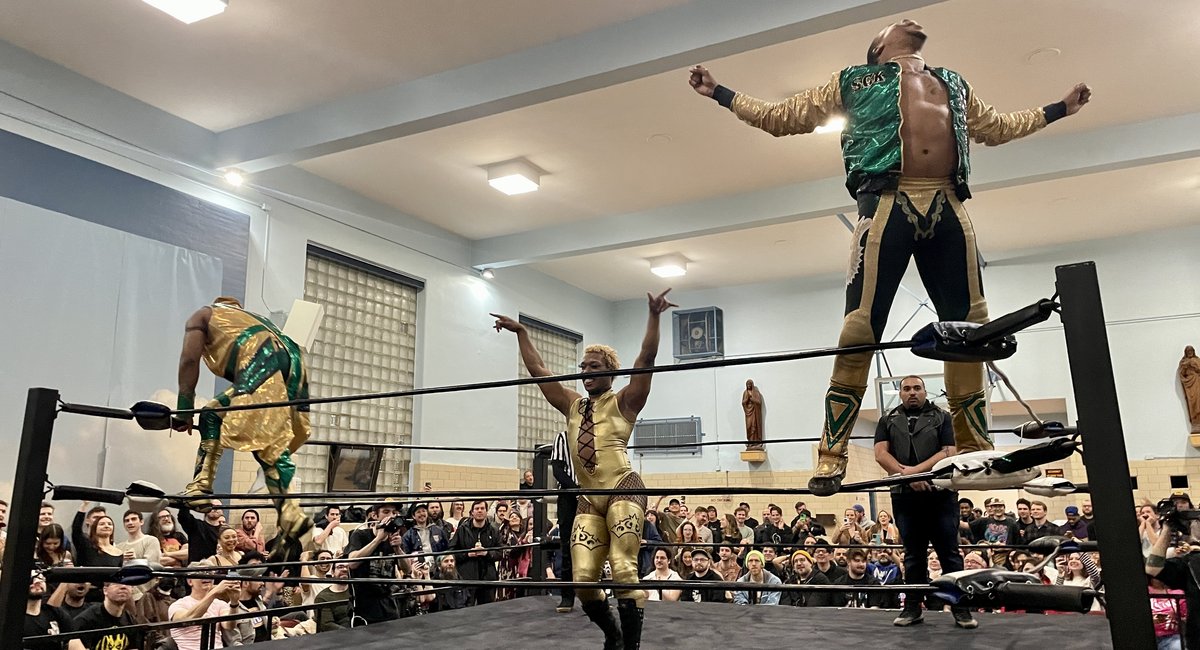Several hundred people gathered in a church in Williamsburg to watch indie wrestling on a recent Friday night.
“Get ready for a circus,” said Sonny Kiss, one of more than a dozen wrestlers who performed. “It’s Broadway with body slams.”
In the center of the gymnasium at the 137-year old church, Our Lady of Mt. Carmel Annunciation, spandex-clad warriors with names like Manbun Jesus and Mikey Whipwreck spent the next three-and-a-half hours engaged in various forms of foot-stomping, eye-scratching, groin-kicking and body flipping for cheering fans.
Bull James, a former WWE wrestler and a church parishioner, founded Outlaw Wrestling in 2017. Indie wrestling is to the WWE a bit like what the minor leagues are to Major League Baseball – a place where athletes can stay in form while they wait to get picked up for the big time or enjoy a more relaxed career while still earning a living. Industry insiders say the scene has picked up considerably in recent years, particularly as pandemic-era restrictions have receded.
Outlaw Wrestling is one of at least a hundred indie wrestling groups that host shows at locations around the tristate area, James said. Performers are paid per appearance, generally by the company that organized the event. Wrestlers can also sign multiyear contracts with groups like Outlaw and work their shows exclusively.
There wrestlers said that while every bout has a winner, the event isn’t actually a competition. There is no prize money, no bracket or advancement.
Tommy Rant, Sage Chantz (collectively “the Slimeballs”) and Mikey Whipwreck.
Ryan Kailath/Gothamist
James said the city’s indie wrestling scene was dwindling while he was competing on the WWE circuit.
“There were shows going on for years with five, 600 people,” James said. “And then a lot of the houses were down to 50 or 60 people by the time I got back on the scene.”
John Radio, who owns Long Island wrestling organization Victory Pro, said attendance at indie wrestling…
Read the full article here

Leave a Reply